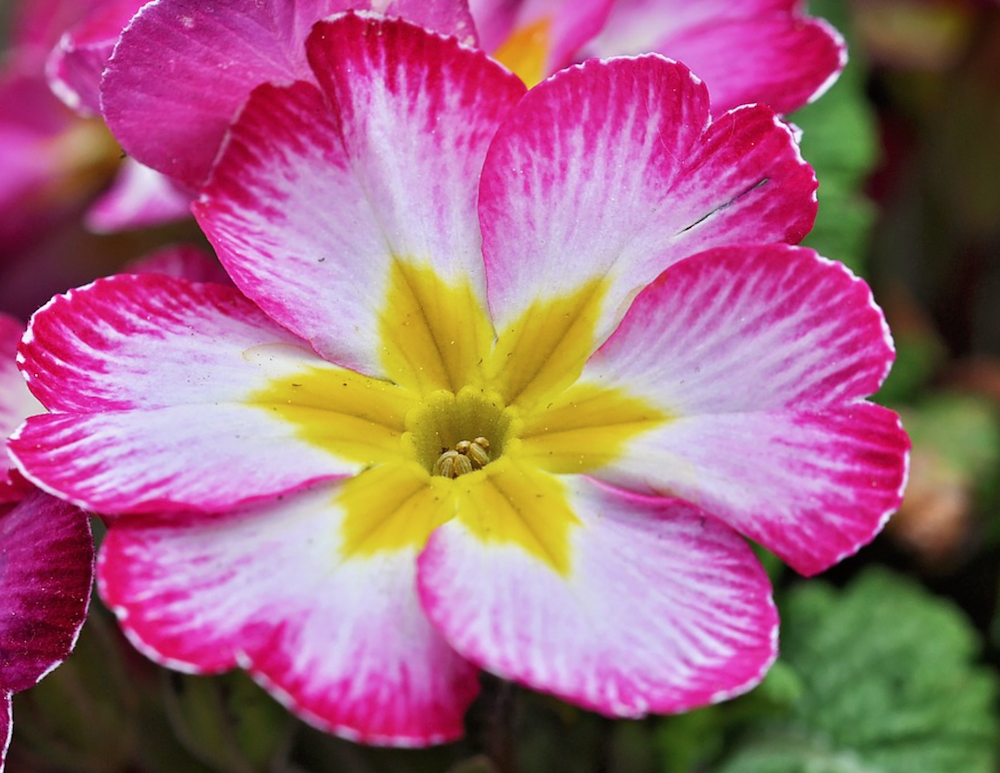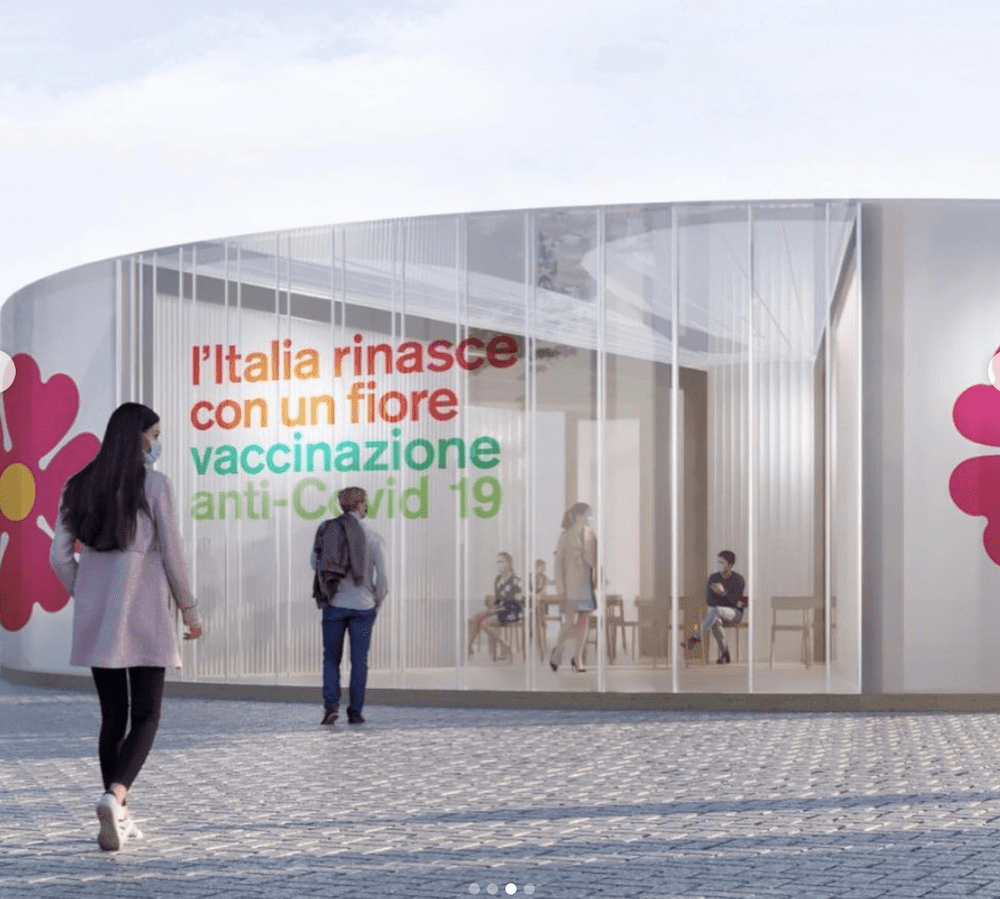With a Flower, Italy Comes Back to Life and Gives It
By Jill Brooke
 Who would have thought a primrose, the first flower that blooms after the winter, would be a source of controversy.
Who would have thought a primrose, the first flower that blooms after the winter, would be a source of controversy.
In an effort to get Italians comfortable with taking a Covid vaccine, authorities turned to the urban planner and architect Stefano Boeri who created pavilions with a primrose motif theme.
Great idea right? Everyone loves flowers. Especially us.
As Boeri told the New York Times, “the primrose is the first flower after the winter” and “a strong message that everyone can understand” whether you are four years old or fifty. Also it isn’t controversial such as an image of a mask flying away into the uninfected air nor brings unhappy thoughts.
But then they had to decide on what flower would be the symbol as well as the right color.
Primroses come in many shades and yellow was considered. But fuchsia pink is bright and happy and became the final choice.
Initially, they had considered a daisy, but it was affiliated with a now-defunct political party and the last thing the team wanted was to politicize the process. A sunflower was also considered but nixed for the same reason since Italy has flowers connected to political parties.
Luckily there is no controversy or political connections related to the primrose.

So now Italian medical workers received the first shots under posters bearing the country’s official slogan of the program, “With a flower, Italy comes back to life.” Soon 1500 pavillions will be all over Italy with the primrose logo.
To his critics, who called his efforts clownish, he says bah-humbug.
“It’s one thing to go get vaccinated in a container or in a military field hospital and it’s another to go into a luminous space in the form of a flower,” he said.
Furthermore, he also pointed out how “flowers are serious.”
We couldn’t agree more.
Indeed they are. Flowers silently assure us that beauty and solace exist despite loss or injustice which is why strangers gather to lay flowers at funeral wreaths or tributes for those who have died. They are the weapons of choice to disarm violence – the daisy to combat the image of nuclear war – and add a peaceful voice to anguish. Their beauty is a symbol of hope.
Built into a flower’s biological structure seems to be the ability to express feelings of grief and gladness, sympathy and joy, hope and courage.


Boeri’s involvement with this “flower power” project started a month ago. The architect was well-known for creating vertical forest sky-scrapers in Milan which were applauded for bringing color, greenery and vitality to the neighborhood.
Domenico Arcuri, Rome’s special commissioner for the coronavirus emergency reached out to him to come up with an idea that would resonate and encourage people to feel safe in taking the vaccines.
The program’s goal is to vaccinate at least 40 million Italians hard hit by the virus. The primrose logo on the pavilion will immediately brand the concept and provide positive images and opportunities. It can also be applied to gazebos or wherever the vaccine will be distributed. There is also a promotional video showing flowers blooming in thousands of piazzas throughout the country.
In fact, fashion trends may emerge if those who got the vaccine start wearing a primrose pin.
Sometimes choices have more meaning than at first known. Primrose is actually a fantastic choice. In the language of flowers, primrose comes from the Latin word, “primus,” which means “first.” Obviously, that symbolism applies to those who are first to get the vaccine.
They are also given as a way to say you can’t live without them – which has a connection to vaccines as well.
Overall, we say “brava” to the team here for creating architectural flower power and conceiving of such a wonderful program that will save lives and inspire.
 Jill Brooke is a former CNN correspondent, Post columnist and editor-in-chief of Avenue and Travel Savvy magazine. She is an author and the editorial director of FPD.
Jill Brooke is a former CNN correspondent, Post columnist and editor-in-chief of Avenue and Travel Savvy magazine. She is an author and the editorial director of FPD.
Photo Credits: Stefano Boeri Architects
